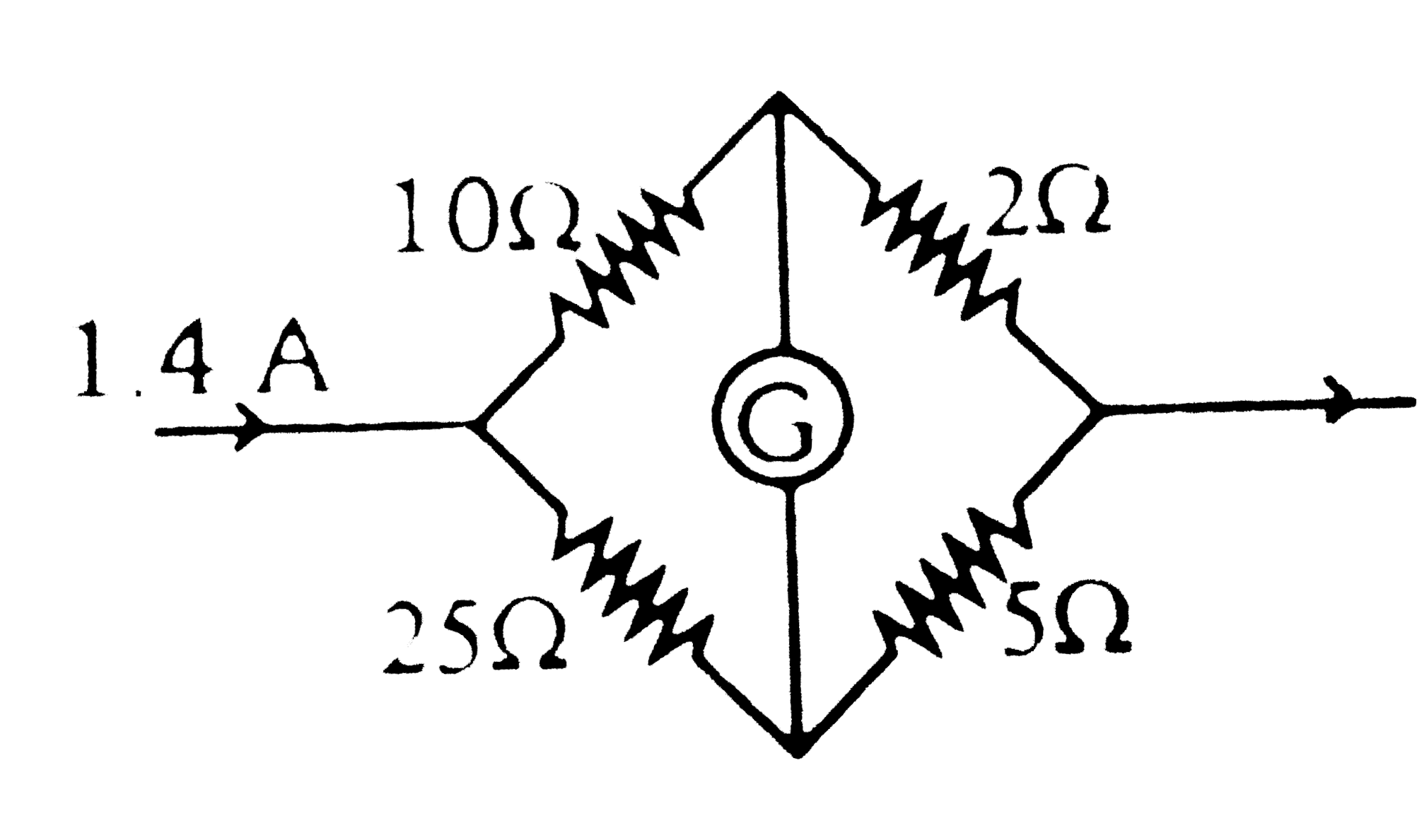Calculate the current passing through a conductor (made up of Cu) if 1 mole of electrons flows through it in 1 hour.
The correct Answer is:26.7 A
To solve the problem of calculating the current passing through a conductor made of copper when 1 mole of electrons flows through it in 1 hour, we can follow these steps:
Step 1: Understand the relationship between charge, current, and time
The current (I) can be defined as the total charge (Q) flowing through a conductor in a given time (t). The formula is:
I=Qt
Step 2: Calculate the total charge (Q)
We know that 1 mole of electrons corresponds to Avogadro's number, which is approximately 6.022×1023 electrons. Each electron has a charge of approximately 1.6×10−19 coulombs. Therefore, the total charge (Q) can be calculated as:
Q=n×e
where:
- n=6.022×1023 (number of electrons in 1 mole)
- e=1.6×10−19 C (charge of one electron)
Calculating Q:
Q=6.022×1023×1.6×10−19
Q=9.6352×104 C
Step 3: Convert time from hours to seconds
The time given is 1 hour. We need to convert this into seconds:
t=1 hour=3600 seconds
Step 4: Calculate the current (I)
Now that we have both the total charge (Q) and the time (t), we can substitute these values into the current formula:
I=Qt
I=9.6352×104 C3600 s
Calculating I:
I≈26.7 A
Final Answer
The current passing through the conductor is approximately 26.7 amperes.
---
The current (I) can be defined as the total charge (Q) flowing through a conductor in a given time (t). The formula is:
I=Qt
We know that 1 mole of electrons corresponds to Avogadro's number, which is approximately 6.022×1023 electrons. Each electron has a charge of approximately 1.6×10−19 coulombs. Therefore, the total charge (Q) can be calculated as:
Q=n×e
where:
- n=6.022×1023 (number of electrons in 1 mole)
- e=1.6×10−19 C (charge of one electron)
Q=6.022×1023×1.6×10−19
Q=9.6352×104 C
The time given is 1 hour. We need to convert this into seconds:
t=1 hour=3600 seconds
Now that we have both the total charge (Q) and the time (t), we can substitute these values into the current formula:
I=Qt
I=9.6352×104 C3600 s
I≈26.7 A
The current passing through the conductor is approximately 26.7 amperes.
Topper's Solved these Questions
- CURRENT ELECTRICITYBOOK - MODERN PUBLICATIONCHAPTER - CURRENT ELECTRICITYEXERCISE - CONCEPTUAL QUESTIONS
35 Videos
- CURRENT ELECTRICITYBOOK - MODERN PUBLICATIONCHAPTER - CURRENT ELECTRICITYEXERCISE - TOUGH AND TRICKY PROBLEMS
23 Videos
- CURRENT ELECTRICITYBOOK - MODERN PUBLICATIONCHAPTER - CURRENT ELECTRICITYEXERCISE - Chapter Practice Test
15 Videos
- ATOMS BOOK - MODERN PUBLICATIONCHAPTER - ATOMS EXERCISE - Chapter Practice Test
16 Videos
- DUAL NATURE OF RADIATION AND MATTER BOOK - MODERN PUBLICATIONCHAPTER - DUAL NATURE OF RADIATION AND MATTER EXERCISE - CHAPTER PRACTICE TEST
15 Videos
Similar Questions
Knowledge Check
When current passes through a conductor,
Ait creates an electric firld around it, directed towards the conductorBit creates an electric field, directed away from the conductorCnone of the aboveDAll of theseIf the electric current through an electric bulb is 3.2 A, the number of electrons flow through it in 1 second is
A2×109B2×1019C3.2×109D1.6×1018When a current flows through a conductor its temperature
AMay increase or decreaseBRemains sameCDecreasesDIncreases
An electric current passing through a conductor is 5 A. Calculate the number of eletrons that pass thorugh a given cross-section of the conductor in1μS.
View SolutionWhat is meant by electric current ? Name and define its SI unit. In a conductor electrons are flowing from B to A. What is the direction of conventional current? Give justification for your answer.
A steady current of 1 ampere flows through a conductor. Calculate the number of electrons that flow through any section of the conductor in 1 second. (Charge on electron =1.6×10−19 coulomb)
View SolutionWhen current flows through a conductor, then the order of drift velocity of electrons will be
View SolutionIf one ampere current flows through a conductor, the number of electrons flowing across the cross section of the conductor in 2 second it _________.
View SolutionCurrent of 4.8 A is flowing through a conductor. The number of electrons per second will be
View Solution

